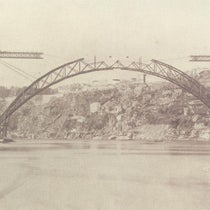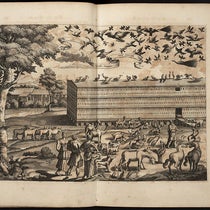Scientist of the Day - William Nicholson
William Nicholson, an English chemist, was born Dec. 13, 1753. He went to sea as a teen and made two trips to the Orient with the East India Company before settling in London, without further education, determined to make his mark as a natural philosopher. This was to be no easy task for a “sailor boy,” as Joseph Banks once called him. He spent some time as an agent for the potter Josiah Wedgwood. He published a few articles in the Philosophical Transactions of the Royal Society, and he wrote and published An Introduction to Natural Philosophy (1781), a textbook that went through 5 editions in the next three decades (we have one, the second, in our collections). His goal was to be admitted to Fellowship in the Royal Society. But he would never be invited to join their ranks. His plebian past made that impossible.
In 1783, Nicholson was attracted to a recently established discussion group, the Chapter Coffee House philosophical society, which met every two weeks at the coffee house to do experiments and discuss the latest chemical news from France. He was apparently spurred by his contacts there to take up the profession of being a translator and editor. He translated some French books on chemistry, and then finally decided, in the mid-1790s, to found and edit his own scientific journal. In 1797, the first issue of the Journal of Natural Philosophy, Chemistry and the Arts hit the booksellers’ stalls, and the journal appeared every month for 16 years, with Nicholson editing every single issue.
Nicholson’s Journal was the first scientific periodical in Great Britain that was not the organ of some scientific society or organization. It did not have to please any overseeing board – it answered only to Nicholson. He wanted a journal that was useful for the working scientist. Originality was not essential, so there were lots of translations and digests of articles from the Continent, much of which Nicholson translated himself, and a regular feature that he called “scientific news,” which allowed readers to keep up with what was happening in a variety of scientific fields.
But as it happened, there were many original and important papers that were published in what came to be called Nicholson’s Journal. One of the first was by Nicholson himself, who, shortly after Alessandro Volta announced the invention of the Voltaic pile (the battery, in the pages of the Philosophical Transactions in the spring of 1800), discovered that when you send an electric current through water, it breaks down into hydrogen and oxygen. The process came to be called electrolysis, and Humphry Davy would soon use it to discover a host of new elements such as sodium and chlorine. Electrolysis was first announced in the July 1800 issue of Nicholson’s Journal (third image). When William Henry wanted to publish an addition to his paper of 1803 in the Philosophical Transactions on partial pressure of gases, he chose Nicholson's Journal, because of the quick turnaround, so his famous aphorism, Every gas is as a vacuum to every other gas, first appeared in Nicholson’s Journal, not the Philosophical Transactions. Perhaps the most famous set of papers to be published by Nicholson were the three seminal articles on heavier-than-air flight by George Cayley that were published in Nicholson’s Journal in 1809-10. You can see some of those pages in our post on Cayley.
All told, Nicholson published 41 volumes of his journal before he decided to fold his tent in 1813 and let a new competitor, The Philosophical Magazine, take over. It was just in time; Nicholson died two years later, in 1815. We have the complete set of Nicholson’s Journal in the Library, now shelved in the new Cage section of our Serials Collection.
I got to wondering, while working on this piece, just how many scientific journals are customarily known by the name of the editor, even though that name is lacking from the official name of the journal? There are not many. In addition to Nicholson’s Journal, I came up with Silliman’s Journal (more properly known as the American Journal of Science, founded in 1818), Petermanns Geographische Mitteilungen, an important geographical journal, founded in 1855 by August Petermann, originally without his name attached (Alfred Wegener’s original papers on continental drift appeared in this journal in 1912), and Curtis’s Botanical Magazine, which started out as just the Botanical Magazine in 1787. And there are several journals that had the editor’s name in there from the beginning, such as Paxton’s Magazine of Botany (1834). But that’s about it, really. Nicholson heads a very short list of editors whose principal in memoriam is the very journal they edited.
William B. Ashworth, Jr., Consultant for the History of Science, Linda Hall Library and Associate Professor emeritus, Department of History, University of Missouri-Kansas City. Comments or corrections are welcome; please direct to ashworthw@umkc.edu.

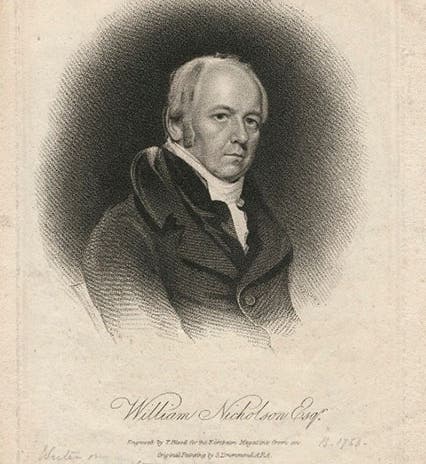
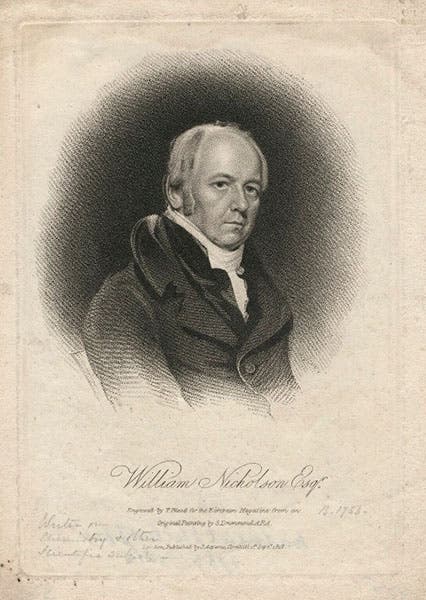
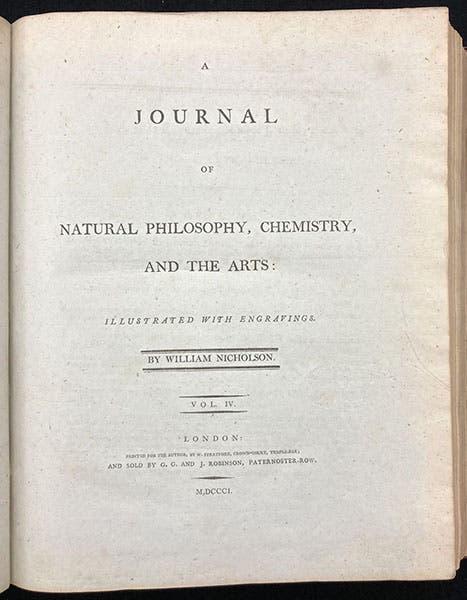
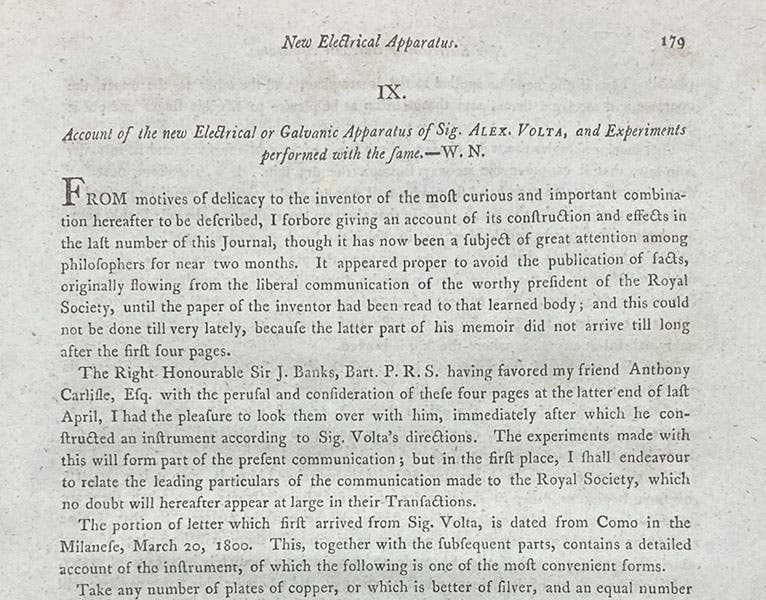
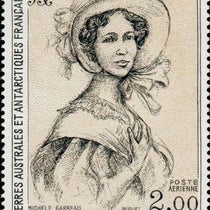
![Bivouac on Jan. 26 [1854], chromolithograph from a sketch by Balduin Möllhausen, Explorations and Surveys for a Railroad Route from the Mississippi River to the Pacific Ocean: Route near the Thirty-Fifth Parallel, by Amiel W. Whipple (Pacific Railroad Report, 3), 1856 (Linda Hall Library)](https://assets-us-01.kc-usercontent.com:443/9dd25524-761a-000d-d79f-86a5086d4774/55140a90-4b5d-4dac-832c-5def5cb51a10/Whipple1_cover.jpg?w=210&h=210&auto=format&fit=crop)
